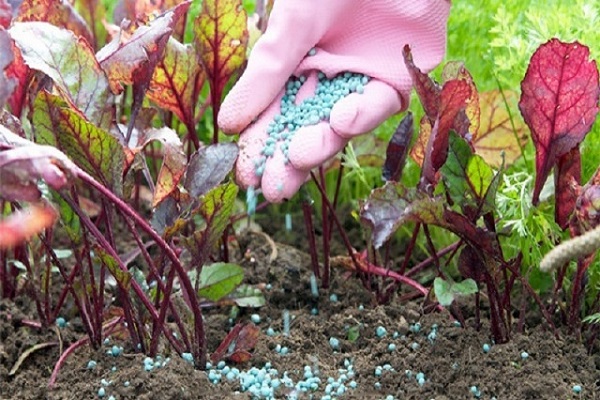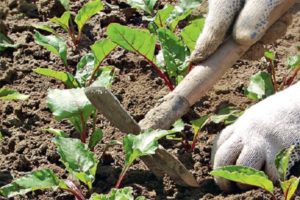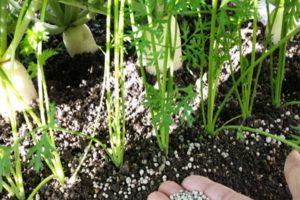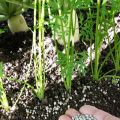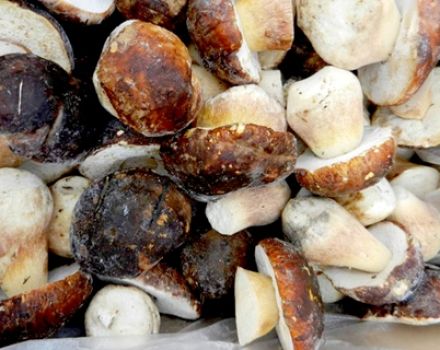How often and correctly to water the beets outdoors?
Many gardeners are interested in how to water beets outdoors. After all, this is an important component of agricultural technology. Vegetable growers celebrate if you observe the moisture regime and combine it with watering beets with salt water, this will positively affect not only the yield, but also the taste of the fruit. It is important to know that depending on the growing season, the crop reacts differently to moisture in the soil. To always have a good result, you must follow the rules.
Soil condition and how to determine it
Inexperienced gardeners use this rule: the more often you water the crop, the better it will be for it. But this opinion is erroneous and often leads to crop loss. Both lack and excess of moisture have a negative impact on the development of root crops. The water level in the soil will help determine how much moisture the beets need.
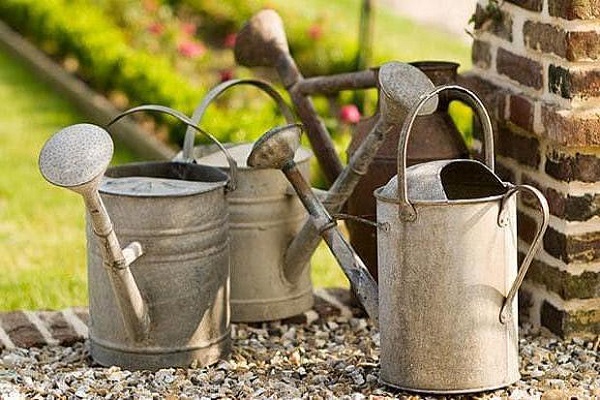
The appearance of the soil is directly related to the degree of moisture. At the same time, there are such recommendations for watering:
- The soil looks like powder and does not collect into lumps - which means that it is dry and needs abundant watering.
- The soil can collect in a lump, but when dropped from a long distance it easily crumbles into small parts - moderate watering of the beets is necessary.
- The soil is easily collected in a lump, while it does not break from hitting the ground and does not stick to your hands - a good condition, requiring watering only on hot days.
- The earthen mixture easily rolls into a ball and sticks to your hands - you can refuse watering for a week.
- The squeezing of the coma is accompanied by the appearance of wet drops - the soil is damp, does not need moisture for 14 days.
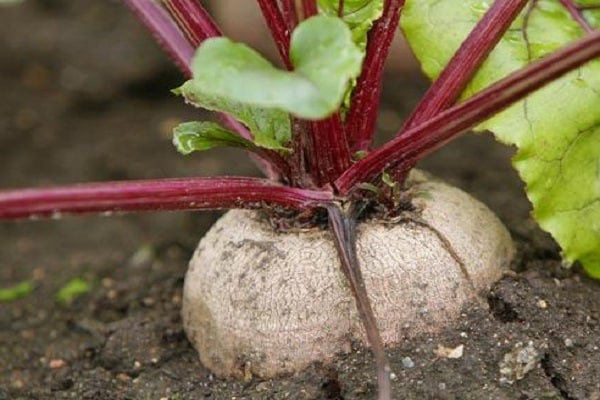
Intensity and frequency
As mentioned above, it is necessary to water the culture only when it needs it. This is influenced by factors such as the growth phase and environmental weather conditions. Beets are a vegetable that has the ability to store moisture. In dry periods, she uses it sparingly. Therefore, waterlogging can do more harm to it than drought.
An adult plant can be left without water for at least 2 weeks. What can not be done with young sprouts that need careful care. If the moisture has nowhere to go, it can lead to negative consequences. Root crops rot and crack over time.
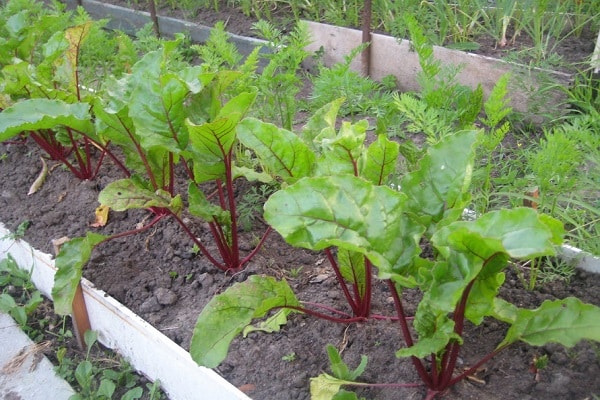
How to properly water beets?
Watering beets in the open field can be done in several ways:
- with a hose;
- drip irrigation;
- using a watering can;
- by sprinkling.
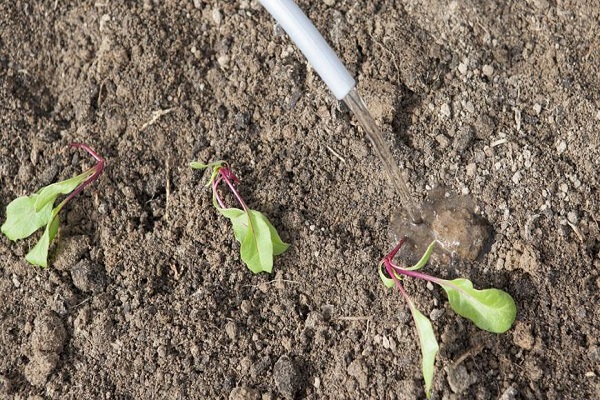
Using the hose
Most often practiced by the farmer on large vegetable plantations. Before watering, the hose is connected to the plumbing system and stretched across the land. For these purposes, it is better to choose durable, flexible and two-layer products with nylon braiding.
For even watering, you need to put nozzles on the hose. They spray jets of water, so the moisture enters the roots in small pieces, without harming the sprouts.
The good thing about the hose is that it can be extended at any time using additional sections. They are connected to each other with special adapters. How often to water the beets in this case? The hose is installed on land, leaving a head slightly below average. If the soil is sufficiently saturated, it is transferred to another place.

At the same time, gardeners must ensure that the pressure does not erode the soil and does not knock down the culture.
Advantages and disadvantages of this method
More suitable for medium sized areas. On large areas, it is impossible to use the hose, as kinks and bends appear under its weight. It takes a lot of physical effort to move. If the product is made of poor quality material, it may leak and become unusable. Good hoses that last a long time cost a lot more.
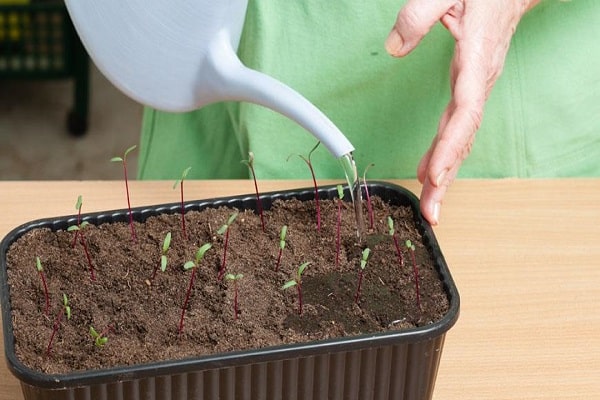
Drip irrigation
One of the best ways to saturate the crop with moisture is drip irrigation. People who can afford it say the plant is getting the right amount of fluid. In turn, this has a positive effect on the growth of the vegetable and the yield.
Among the advantages, the formation of a zone with directional moistening on the land plot is distinguished. This saves water consumption and is suitable for all types of soil. This method does not create crusts in the beds, which reduces human labor costs when working with the crop. The downside is additional material costs.
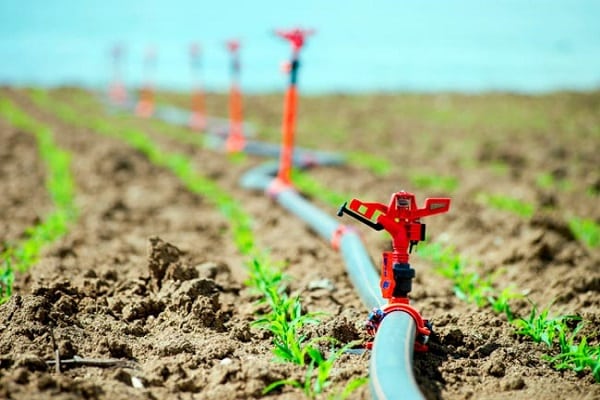
Watering with a watering can
Beets can also be saturated with moisture using a simple tool like a watering can. The known method has a number of features:
- The containers with the sown vegetable seeds are watered, going beyond the boundaries of the beds. Heavy droplets often erode the ground and expose the seeds, thus damaging the seedlings.
- Leading the watering can over the plants, monitor the pressure of the water so that it remains uniform. Then the soil will receive the same amount of moisture.
- A person independently regulates the strength of watering.
By watering the sprouts with water, the farmer knows that all the moisture goes to one particular piece of land. An important advantage is that after irrigation, no characteristic dried crust remains on the soil surface. A watering can is impractical to use in large beds. Suitable for watering seedlings or saturating a single plant with moisture.
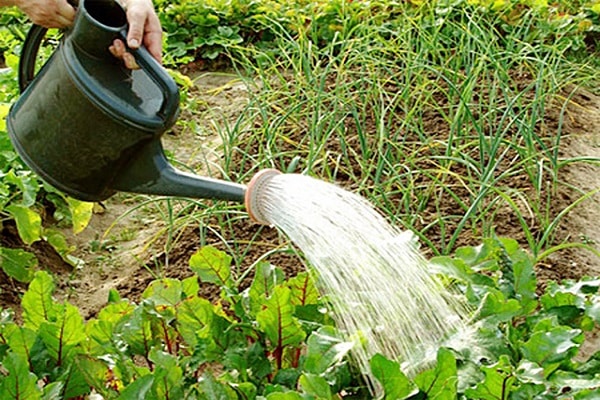
Sprinkling
This method is also used over large areas. The advantage lies in the absence of damage by pests and diseases when drops hit the tops. After watering, the soil is saturated with moisture, and the beets consume it moderately. Despite the fact that the earth does not need to be loosened after irrigation, the installation of the system requires a lot of money and a constant high pressure in the water supply system.
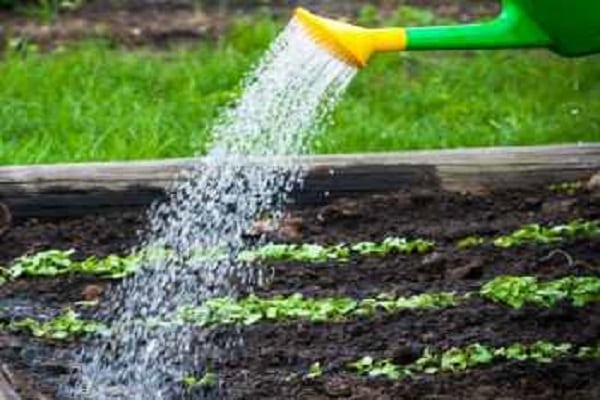
Water requirements
The use of ice water has a negative effect on the growth of the vegetable. Before using it, it is necessary to warm it up so that the plant is saturated with useful substances as best as possible. If precipitation falls in cold weather, rainwater is also collected and settled to a comfortable temperature for further irrigation. Otherwise, such a minor nuance can affect the yield of the crop.
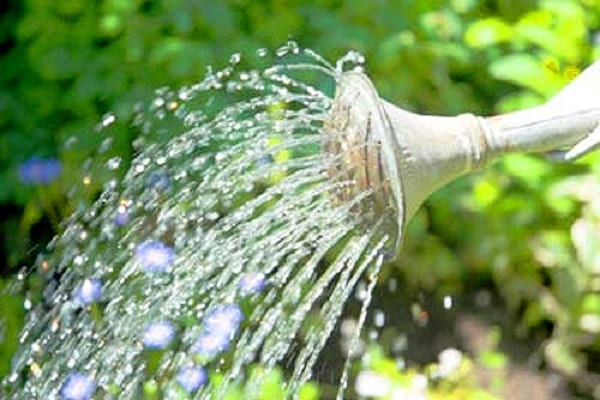
Fertilizers
To obtain a rich beet taste, it is recommended to water the plant with solutions with the addition of salt or boric acid. As top dressing, they take wood ash and dilute it in water.Watering with fertilizers is carried out twice in the beet growing season. With the help of this technique, the concentration of sugars in root crops is increased, which makes their pulp juicy and sweet.
